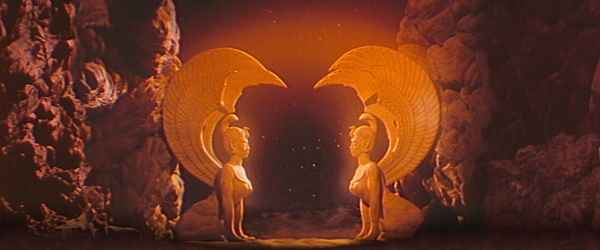
 |
Storyboard, Production Painting |
 |

 |
Storyboard, Production Painting |
 |
When you see this fantasy movie you hardly guess what a artistry stand behind the moved pictures. That begins with the realization of the extraordinary fanciful novel by M. Ende as base for imagination of the film. The long dispute about the plot proves this. It ended with the defeat of Mr. Ende. It is the achievement of the painter Ul de Rico that the long times as unrealizable taken for transformation of the novel into real images lies so near at the original. And in my mind also very near to the imagination of the readers. With his production paintings he inspired the script authors and the rest of the production team. However this alone makes no movie shot. How think out the costumes, figures and the creatures? How do the camera team and the stage designer know what the director pictures? Here help Costum Drawings and the Storyboard.
Why there is no german word for "production paintings", is must be because in Germany a resposible person was cut down. Nevertheless, they are very important for a successful movie. They are the connection between novel base and the film shooting. There is a contradiction between mostly original realization with the right mood and the technical possibilities by a movie.


We owe to the painter Ul de Rico that this film carry with the most spectators. Ul de Rico created the first images which gave the red thread to the director and the script writers. The Ivory Tower, the Rockbiter and the other magnificent landscapes of Fantasia developed from his sketches and paintings.
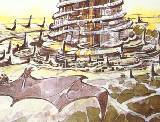



On the other side, the film business is characterized by a great hectic, a strait time regime and a big heap of work. Unfortunately the sensetive artist Ul de Rico don't this over the whole working time. His contract was ended in April 1983. His task was undertaken by Janez Plahuta-Japl and his team of three. Before they already worked under Ul de Rico. Their abilities were not smaller. You can't see any break in the film.

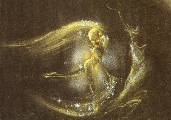
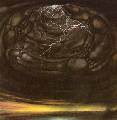
All images at this site come from the book "The world of the Neverending story". You can see at the comparision between the Rockbiter design and its realized creature how closed the creature designer work at their proposal. Assuming that it can be realized. The development of a realistic model we find at the second example: the Ivory tower. The design had to make compromisses to create an impressing but real tower. In third image row we find examples which can't realized in the movie: Ygramul (its sequenze couldn't be produced realistic enough with the special effect possibilies of the time), the Will-o-the-Wisp (anyway, it would have been to small) and the four wind giants (which have no big importantance). In the last example, the Sphinx-gate of the Southern Oracle developed from a three dimensional idea to a plain scenery.

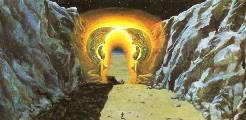
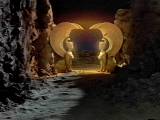

The costum drawings have the same sense as the production paintings. They have to bring the abstract imaginations onto paper. With this the costum tailor and creature engineers can start their work.


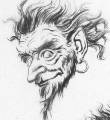

Of course, the artist were the same as at the production paintings, Juan Japl and his team.
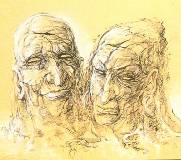
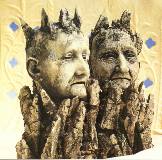
In contradiction there were again the artistic imagination and the limited funds In my mind, this is the best ability of this artist to create a perfect illusion at the screen in spite (or all the more) of their simple means.
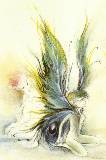
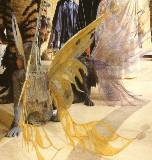
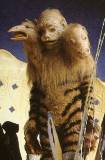
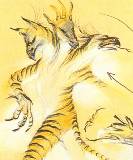
The costum designer had their most work for the scene in the Ivory Tower. The big hall should be full of messengers of all creatures from whole Fantasia. In the end 78 (72) creatues were taken. The camera teams hat to arrange it that it seems to be a big crowd. From a view above it is fascinating how less the hall was filled.

The task of a storyboard is to take up the ideas of the director as exact as possible and to transmit them to the stage designers, camera teams and actors. The optical way is easier, faster and better then a verbal way because of the many details of a scene. However, ever scene has to be paint with all its details for every view. Round 5000 images are necessary for 90 minutes film. They show the planed camery view that means the original format of the film. Sometimes, remarks are added if they make the intension of the director moe clearly.
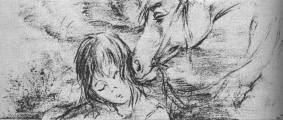
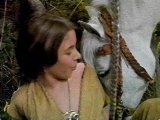
Is this expenditur worth? Of course. Finally, it is done. The storyboard brings considerable advantages. The remaining film time becomes calculable. That simplifies the time table. And the costs become calculable. This plays an important role at such big challenges. For instance, the stage designers only have to buils up those constructions that are really to see in the further movie. The creature crews can estimate how their creatures appear which movements they need. With the storyboard the production crew starts their work. And before that the storyboard is the discussion base for the director.
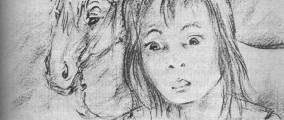
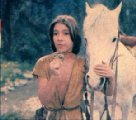
Even four artist were engaged at the NES for creating the storyboard. Peter Classey, Jimmy Stepanoff und Josip Trupinov worked under the direction of Janez Plahuta-Japl. Additionally, the painter Earnie Kollar created a colorful pointing for every scenery. R. Eyssen wrote in his book ironicly this were desired objects for the dining rooms for some thief.
The painting artist get their ideas normally from the script. They had to go back to M. Endes novel at this production because of the difficult story the script was changed again and again. It is fantastic how many storyboard images were created in the shortest time. Finally the stage designer always waited for the storyboard. At one discussion of the directors crew, 20 stamp-sized pencil drawings were developed in one hour. They werre the base for the actual stroyboards. Once, Juan Japl finished 90 full drawings in only three days.
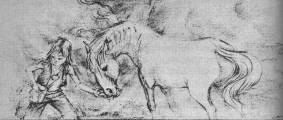
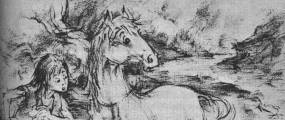
Beside all this facts, I think it is really impressiv how exact the real movie correspond with the dawings of the storyboard. It is a bit sad for the artists that they are written almost at the end of the production team listing.
In the next images I want to compare storyboard and movie. The images comes from R. Eyssen: Der Film Die Unendliche Geschichte, Heyne-Verlag, München, 1984 and of course from the the movie.
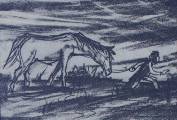 |
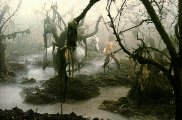 |
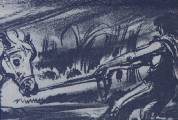 |
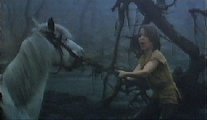 |
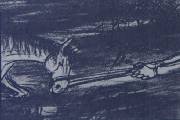
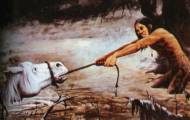 |
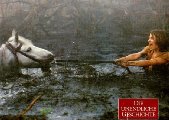 |
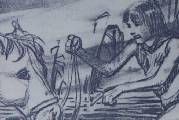 |
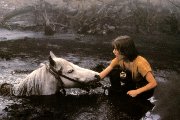 |

Who knows more facts please send me
mail
 .
.
page design from Gerald and Paulchen
